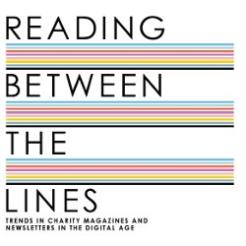Print remains an important medium for communicating with supporters, and charities should ask audiences how they want to receive information before abandoning the hard-copy format.
The CharityComms report, Reading Between the Lines, surveyed 126 charity professionals to find out if printed products still offered value for money.
It warns that: “While growing numbers of people are using the internet and owning smartphones and tablets, it’s a risk for charities to replace print publications with digital alternatives. Rather charities can use the opportunities offered by digital approaches to think about content more broadly.”
Just over 50 per cent of survey respondents predict that over the next five years they will be producing a mixture of printed and digital publications with 37 per cent thinking that digital will dominate.
Of the respondents who produce magazines for members 91 per cent produce a print version, 42 per cent a static PDF, 35 per cent a digital edition and 6 per cent have a magazine microsite.
The report identified ten points for charities to consider before ditching the physical magazine:
- Ask the audience how they want to receive the information
- Establish how to get regular feedback from readers
- Consider a phased approach to moving the audience online
- Link between digital and print versions
- Think about how to use advertising in digital and print
- Come up with ways to capture the email addresses of print subscribers
- Look at the commercial publishing sector for information
- Use different mediums for different things – digital is better for news, print for longer pieces
- Think about content more broadly – work out what the message is before deciding how to deliver it
- Test new formats with a small audience first









